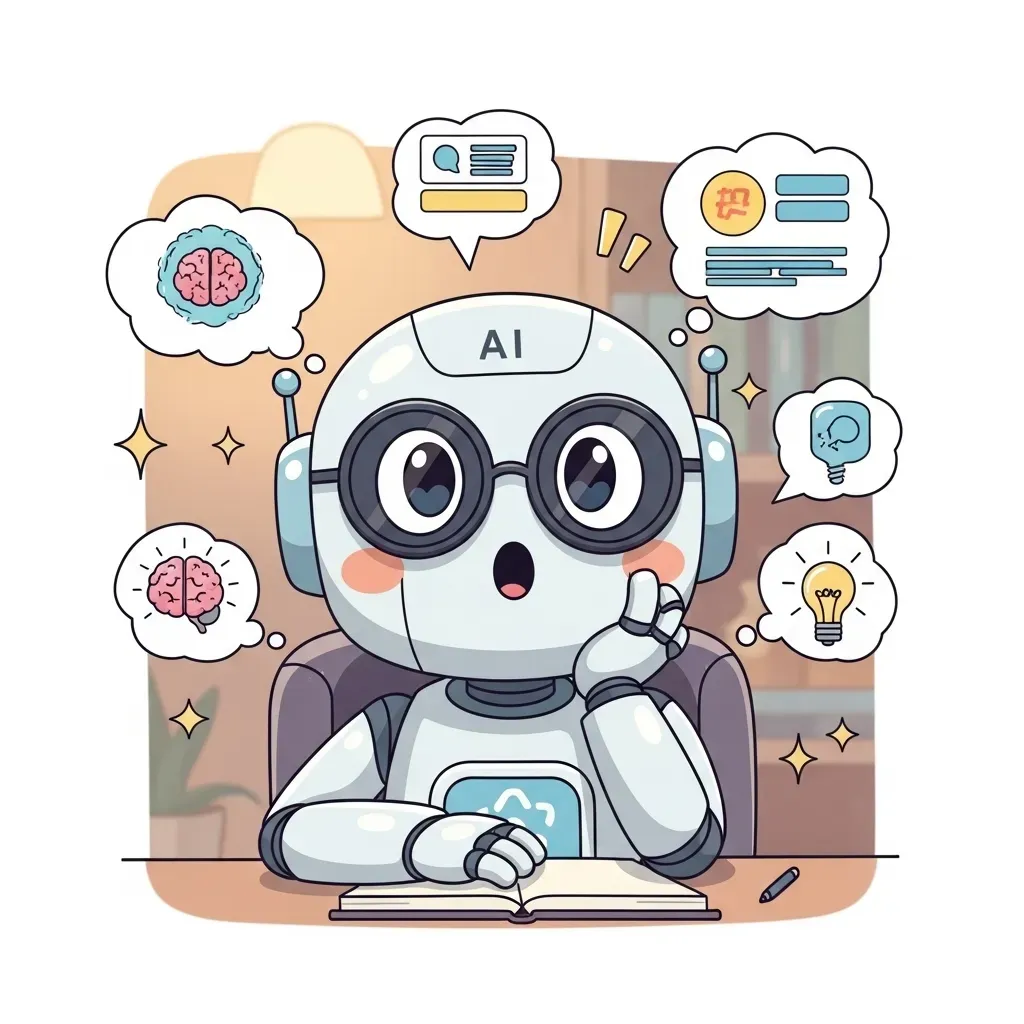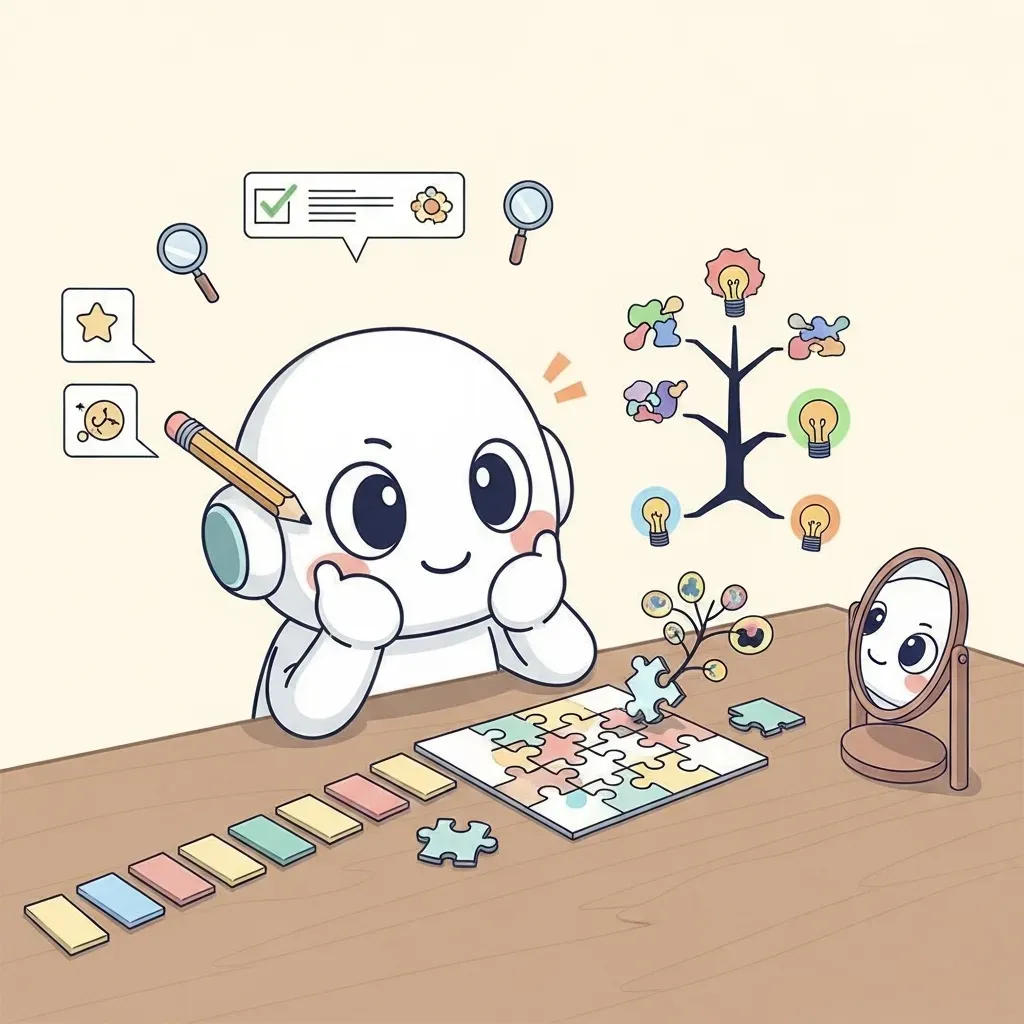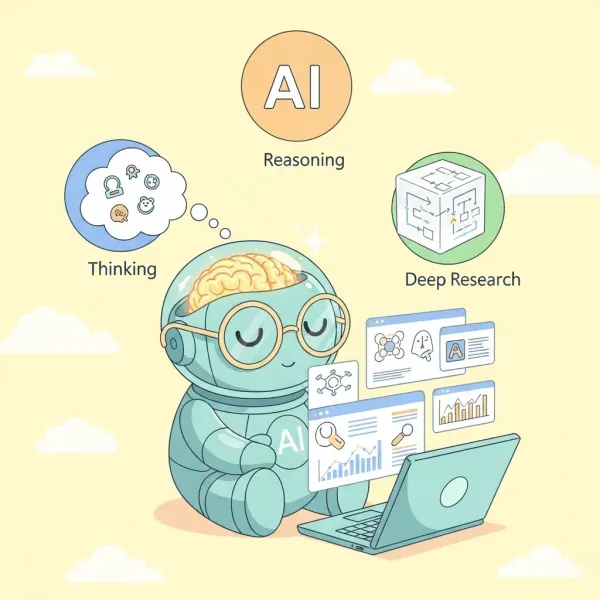As generative AI services become more sophisticated, new terminology emerges and sometimes existing terms are used with different meanings. Amid this flood of terminology, AI's ability to think, reason, and conduct deep research like humans is gaining attention. While we used to think of AI as a tool that only provides answers based on input context, we now live in an era where AI has internal thought processes, abilities to solve complex problems step by step, and capabilities to autonomously explore the web and provide answers by synthesizing vast amounts of information.
This article organizes and discusses Thinking, Reasoning, and Deep Research.
Thinking (Internal Thought Function)

'Thinking' is the ability for AI models to think internally first before showing answers to users. Just as humans pause to think and reflect before answering complex questions, LLMs do the same. According to recent research, when LLMs can step back internally and think before providing answers, they can solve more difficult problems. For example, Meta's research team trained LLMs to go through separate thought processes before generating answers after receiving commands, and these 'thinking' enhanced models showed better results in complex tasks.
- Cursor AI: A coding assistant that utilizes internal thought processes when solving complex coding problems.
- Claude 3's Think tool: Using the "think" tool announced by Anthropic, Claude 3 models can automatically pause during responses to think additionally.
- Meta AI's Thinking LLMs research: Meta FAIR researchers developed training methods to embed 'thinking' into LLMs without using separate data.
In other words, Thinking is a function that allows LLMs to have additional computation in invisible places, giving them time to think for themselves. It contributes to generating more natural and consistent responses.
Reasoning (Step-by-step Inference Ability)

Reasoning is AI's ability to solve problems step by step logically. For example, there are methods like Chain-of-Thought where intermediate processes are written line by line, or Tree-of-Thought where multiple solution paths are expanded like tree branches. Essentially, it's about breaking problems into small steps and solving them methodically.
In conclusion, Reasoning is technology that helps AI solve problems logically through systematic and structured thinking. It's about breaking complex problems into smaller parts and solving them step by step.
Intermediate Step Evaluation and Self-Verification (Reflection, Self-Verification, etc.)
Reasoning models perform self-evaluation or iterative review (Reflection) after completing each step of inference. Particularly in recent models, Self-Reflection functions check "Did I make errors in previous steps?"
Before moving to Deep Research, here's a simple table summary of existing Inference and the above-mentioned Thinking and Reasoning:
| Category | Inference | Thinking | Reasoning |
|---|---|---|---|
| Core Feature | Retrieving memorized knowledge | Retrieving internalized knowledge in personal style | Step-by-step logical development |
| Tone | Can be stiff like an encyclopedia | Consistent tone, personality, style | Calculation, evidence, process-centered |
| Example Question | "Who is Kant?" | "Yes, Kant is a representative of moral philosophy..." (personal tone) | "Explain examples where Kant's philosophy is applied" → step-by-step thinking |
Deep Research (In-depth Material Investigation)

Deep Research is essentially "AI agents that explore and summarize vast external materials to automatically generate 'in-depth reports' instead of humans."
Gemini, ChatGPT, Perplexity, etc. have also introduced new Deep Research models that collect and analyze vast materials through dozens of searches and reading hundreds of sources in response to user questions, automatically generating comprehensive reports.
- Main processes of Deep Research:
- Research Planning – AI establishes research directions and step-by-step plans after receiving questions.
- Search and Information Collection – Performs iterative web searches according to the plan, reads related materials, and extracts necessary information.
- Report Writing – Synthesizes collected materials to organize key content and generates logically analyzed reports. These reports clearly include sources and citations.
Thus, Deep Research is a function where AI performs complex material investigations that require much time instead of humans. Users receive insight reports containing verified sources as results.
Ref:
